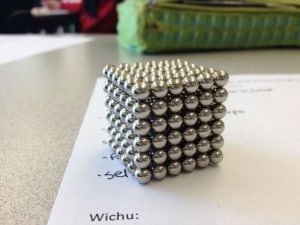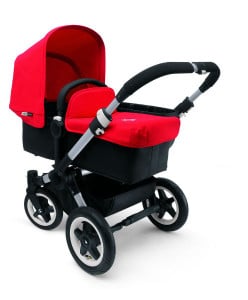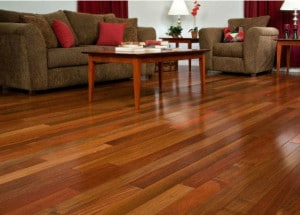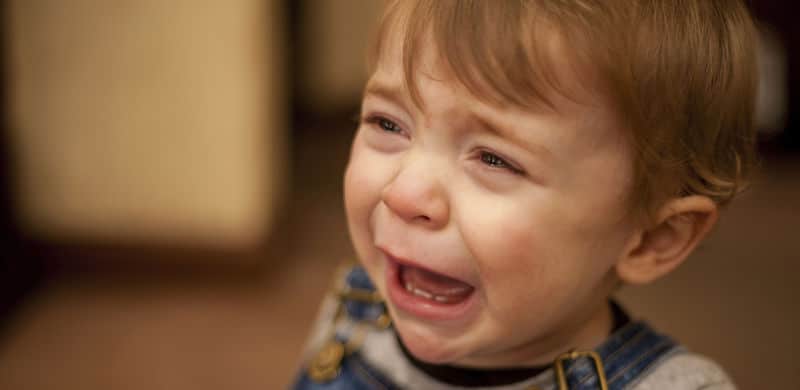New parents often spend considerable time and effort “baby-proofing” a home. From cushioning hard corners to locking cabinets to plugging electric outlets, parents of toddlers need to be extra vigilant to make sure their little ones stay out of harms way. But did you know that there are many common household items which pose dangerous—sometimes deadly—risks to children?
Below is a list of 9 common—yet often overlooked—products that can pose significant baby safety hazards in the home. For more information on current recalls and important safety information for your home and child, visit the Consumer Products Safety Commission (CPSC) website.
Magnets
 According to the CPSC, high-powered magnets pose a significant safety risk to children, and the number of incidents where children have swallowed them is increasing. If two or more high-powered magnets are swallowed, they can link together inside the child’s body, causing a blockage in the intestines, perforations in the stomach or intestines, blood poisoning, and potentially death. Symptoms that may result from swallowing magnets include abdominal pains, nausea, vomiting, and diarrhea.
According to the CPSC, high-powered magnets pose a significant safety risk to children, and the number of incidents where children have swallowed them is increasing. If two or more high-powered magnets are swallowed, they can link together inside the child’s body, causing a blockage in the intestines, perforations in the stomach or intestines, blood poisoning, and potentially death. Symptoms that may result from swallowing magnets include abdominal pains, nausea, vomiting, and diarrhea.
Window Cords
Window blinds with cords are common in households, and according to the CPSC, they pose a dangerous risk to children who can get tangled in them and potentially die of strangulation. The CPSC has reportedly recalled millions of window coverings that have cords due to risks of window cord strangulation.
Food
 While the vast majority of food consumed by babies and toddlers is safe, occasionally contamination or packaging irregularities prompt FDA food recalls. Consuming recalled food can be harmful, or even deadly. Recent notable food recalls include:
While the vast majority of food consumed by babies and toddlers is safe, occasionally contamination or packaging irregularities prompt FDA food recalls. Consuming recalled food can be harmful, or even deadly. Recent notable food recalls include:
- Blue Bell Ice Cream: In April 2015, Blue Bell Creamery, based out of Texas and the third largest ice cream maker in the country, issued a recall for all of its products in more than 20 states. The Blue Bell recall was issued following reports that its popular ice cream products could be contaminated with deadly bacteria known as Listeria monocytogenes.
- Baby Food Recalls: In April 2015, Beech-Nut recalled almost 2,000 pounds of sweet potato and chicken baby food after a shard of glass was found in one of its jars. In August 2014, Heinz baby food in China was found to contain lead. In 2011, a glass in a jar of banana baby food prompted Nestle France to recall 30,000 jars of its product.
- Kraft Macaroni & Cheese: In March 2015, a Kraft Mac and Cheese recall was issued for 6.5 million boxes of original flavor macaroni & cheese because some of them reportedly contained metal pieces. Recalled boxes of Kraft Macaroni & Cheese that could still be in the homes of many consumers may contain metal pieces, posing a potential health risk for children that eat macaroni & cheese regularly.
Laundry pods
 According to a USA Today, single-use laundry packets, known commonly as “pods,” after the Tide Pods brand, sent one child a day to the hospital in 2012 and 2013 on average. If the packets are left out in the open, a child can bite through a packet’s dissolvable membrane that often contains liquid detergent, causing it to squirt out into his or her eyes or mouth.
According to a USA Today, single-use laundry packets, known commonly as “pods,” after the Tide Pods brand, sent one child a day to the hospital in 2012 and 2013 on average. If the packets are left out in the open, a child can bite through a packet’s dissolvable membrane that often contains liquid detergent, causing it to squirt out into his or her eyes or mouth.
Bean Bag Chairs
Bean bag chair injuries can result when these and and similar products are unzipped, which poses a safety risk in homes with children who can crawl inside the bean bags, become trapped, and suffocate. Children can also choke on the stuffing contained in the chairs. In 2014, the CPSC recalled approximately 2.2 million bean bag chairs after two children reportedly crawled inside the bean bags and suffocated.
Strollers

In November 2014, a Graco stroller recall involved approximately 4.9 million strollers due to reports of the folding hinges on the sides of the strollers pinching children’s fingers, posing a risk of laceration or amputation. The CPSC received 11 reports of finger injuries, including six reports of fingertip amputation, four reports of partial-fingertip amputation and one finger laceration.”
In July 2012, a Peg Perego recall involving about 223,000 stroller was prompted after a 6-month-old baby boy died of strangulation when his head became trapped between the seat and the tray of his stroller. A 7-month-old girl nearly strangled when her head became trapped between the seat and the tray of her stroller.
In July 2010, Maclaren recalled nearly 1 million strollers after it was discovered that some of its models posed a fingertip amputation and laceration hazard to a child riding in the stroller when the user was unfolding/opening the stroller.
Coffee Makers
 In December 2014, Keurig recalled approximately 7 million MINI Plus brewing systems to due reports of the water overheating during brewing, spraying out and burning consumers. According to the CPSC, Keurig received approximately 200 reports of hot liquid spraying from the brewing system, including 90 reports of burn-related injuries. Recalled brewing systems that remain in homes with children could pose a burn risk if a child is near the system during brewing.
In December 2014, Keurig recalled approximately 7 million MINI Plus brewing systems to due reports of the water overheating during brewing, spraying out and burning consumers. According to the CPSC, Keurig received approximately 200 reports of hot liquid spraying from the brewing system, including 90 reports of burn-related injuries. Recalled brewing systems that remain in homes with children could pose a burn risk if a child is near the system during brewing.
In May 2010, Walmart recalled 900,000 GE coffee makers due to a fire hazard posed by the products. Prior to the recall, Walmart received 83 reports of overheating, smoking, melting, burning and fire, including three reports of burn injuries to consumer’s hands, feet and torso. Reports of property damage included a significant kitchen fire.
Cribs and Crib Mattresses
In 2011, the CPSC banned the manufacture or sale in the U.S. of drop-side rail cribs, after approximately 9 million of the products were recalled beginning in 2007. The agency attributed 32 deaths to the use of these cribs and noted that:
[D]rop-side cribs generally have a tendency to be less structurally sound than cribs with four fixed sides. Drop-side hardware is prone to break, deform or experience other problems during normal or foreseeable use. The older the crib, the more problems can be expected. When drop-side hardware breaks or deforms, the drop side can detach in one or more corners from the crib. If an infant or toddler rolls or moves into the space created by a partially detached drop side, the child can become entrapped or wedged between the crib mattress and the drop side and suffocate. Infants can also strangle in the “V” shape formed by a drop side that detaches in an upper corner.
After a recall of approximately 169,000 IKEA crib mattresses in the U.S. in January 2015, an expansion was issued for about 131,000 more in the U.S. and 44,000 in Canada. Reports suggest that the recalled crib mattresses can leave a gap between the mattress and crib ends larger than a two-finger width, posing a risk of entrapment for babies.
Laminate Flooring
 Certain types of laminate flooring manufactured in China and sold at Lumber Liquidators and other retail outlets have been alleged to contain unsafe levels of formaldehyde, a cancer-causing agent. Formaldehyde exposure can not only pose a safety risk to adults who live in homes that contain the laminate flooring in question, but could be dangerous to babies and children that can often crawl or play on the floor.
Certain types of laminate flooring manufactured in China and sold at Lumber Liquidators and other retail outlets have been alleged to contain unsafe levels of formaldehyde, a cancer-causing agent. Formaldehyde exposure can not only pose a safety risk to adults who live in homes that contain the laminate flooring in question, but could be dangerous to babies and children that can often crawl or play on the floor.
Images are Creative Commons






